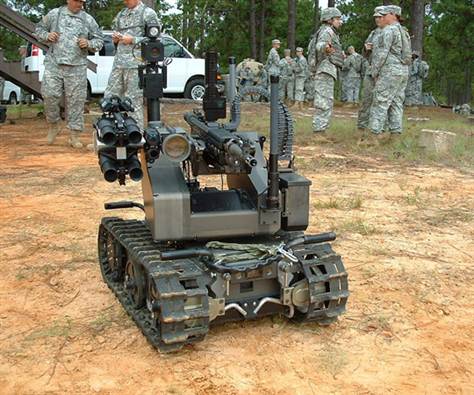A global rights group launched a campaign on Tuesday to ban Terminator-style “killer robots” amid fears the rise of drone warfare could lead to machines with the power to make their own decisions about killing humans.
Human Rights Watch said it was creating an international coalition to call for a global treaty that would impose a “pre-emptive and comprehensive ban” on artificially intelligent weapons before they are developed.
The New York-based group also warned of a possible “robotic arms race” if even one country took the step to allow such machines to enter service.
“Lethal armed robots that could target and kill without any human intervention should never be built,” said Steve Goose, arms division director at Human Rights Watch, said at the launch in London of the “Campaign To Stop Killer Robots”.
“A human should always be ‘in-the-loop’ when decisions are made on the battlefield.
“Killer robots would cross moral and legal boundaries, and should be rejected as repugnant to the public conscience.”
The campaign includes several non-governmental organisations involved in previous successful efforts to ban anti-personnel landmines, cluster munitions, and blinding lasers.
Activists wheeled out a home-made robot outside the Houses of Parliament in London for the launch of the campaign.
The United States has led the way in military robots such as the unmanned drone aircraft that carry out attacks and surveillance in countries including Pakistan, Afghanistan and Yemen.
According to Britain’s Bureau of Investigative Journalism, CIA drone attacks in Pakistan have killed up to 3,587 people since 2004, up to 884 of them civilians.
But these are controlled by human operators in ground bases and are not able to kill without authorisation.
Recent technical advances will soon allow not only the United States but also countries including China, Israel, Russia, and Britain to move towards fully autonomous weapons, Human Rights Watch warned.
“If one or more country chooses to deploy fully autonomous weapons, others may feel compelled to abandon policies of restraint, leading to a robotic arms race,” it said.
Fully autonomous robots that decide for themselves when to fire could be developed within 20 to 30 years, or “even sooner,” Human Rights Watch and the Harvard Law School said in a report in November on the same subject.
Raytheon’s Phalanx gun system, deployed on US Navy ships, can search for enemy fire and destroy incoming projectiles all by itself. The X47B is a plane-sized drone able to take off and land on aircraft carriers without a pilot and even refuel in the air.
Perhaps closest to the Terminator-type killing machine portrayed in Arnold Schwarzenegger’s action films is a Samsung sentry robot already being used in South Korea, with the ability to spot unusual activity, talk to intruders and, when authorised by a human controller, shoot them.
“Many militaries are pursuing ever-greater autonomy for weaponry, but the line needs to be drawn now on fully autonomous weapons,” Goose said.
“These weapons would take technology a step too far, and a ban is needed urgently before investments, technological momentum, and new military doctrine make it impossible to stop.”











